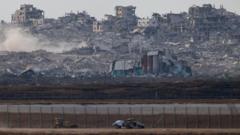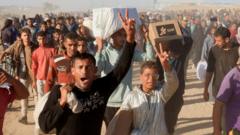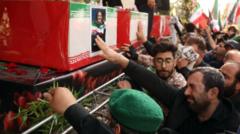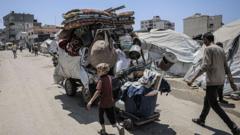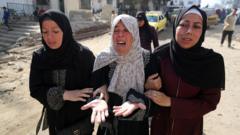Rear Adm. Ali Shamkhani, a key Iranian political figure, was injured in an Israeli missile attack and recently made a public appearance, dispelling earlier reports of his death. The Israeli strikes aimed at Iran’s nuclear capabilities have strained U.S.-Iran relations, with significant casualties reported in the conflict.
Rear Adm. Ali Shamkhani Survives Israeli Strike: A Symbol of Resilience Amid Ongoing Conflict

Rear Adm. Ali Shamkhani Survives Israeli Strike: A Symbol of Resilience Amid Ongoing Conflict
Iranian official Rear Adm. Ali Shamkhani, previously thought to have died in a missile strike, appears in public, highlighting the ongoing tensions between Iran and Israel.
Rear Adm. Ali Shamkhani, a high-ranking official in the Iranian government and advisor to Supreme Leader Ayatollah Ali Khamenei, was seen recently at a funeral service for military commanders in Tehran, despite being presumed dead following an Israeli missile attack last month. Attending the service with a cane, Shamkhani’s appearance reflects his injury from the strike, which occurred on June 13 as Israel targeted key military and nuclear sites in Iran, igniting a significant conflict.
The attack resulted in the destruction of Shamkhani's penthouse in an affluent Tehran neighborhood, with reports indicating severe damage and a high death toll. Initial reports suggested that Shamkhani had perished in the strike, leading to media speculation about his status. However, his recent public engagement has confirmed that he is alive, albeit visibly weakened.
Israel's military campaign aimed to disable Iran's nuclear capabilities, missile facilities, and fuel infrastructure, with claims of over 900 fatalities, including many civilians. This strikes have exacerbated an already tense geopolitical landscape, as the U.S. aligned with Israel during these operations.
As a significant figure in Iran’s political landscape, Shamkhani has played a pivotal role in negotiations surrounding Iran’s nuclear program, which have faced numerous challenges. His survival may indicate resilience against external aggression, while the ongoing conflict raises questions about the future of U.S.-Iran relations and regional stability.

